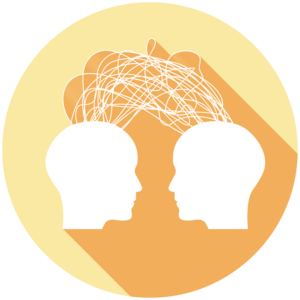Generating The Perfect Face For Your Ad
Relevant topics Archive, Advertising
What is the perfect face for a beauty ad? And which would you use for domestic violence prevention?
In advertising, the primary mission is to promote products or to convey ideas using persuasive language and images. Faces are a key aspect of ads and are often portrayed differently depending on the product advertised and message communicated. But what makes a face visually persuasive?
Generating persuasive faces with machine learning
Thomas and Kovashka generated persuasive faces for different types of advertisements using machine learning. Machine learning is becoming a more and more prevalent technique in all kinds of markets. As the world and media are steering on artificial intelligence, terms like natural language processing, deep learning, and neural networks are often heard outside cognitive psychology nowadays. Machine learning is as the word implies - training a machine to give the right response. By feeding a model data, it recognizes patterns and applies these to later input data. It can be used to alter the input or to predict future outcomes.
The present study used machine learning to generate persuasive faces for different types of advertisements. How does that work?
It all starts with training
First, an existing database of faces with different facial expressions and facial attributes is used to train the model. Seven expressions are learned: happy, sad, surprise, fear, disgust, anger and contempt. Facial attributes are features such as bald, rosy cheeks, smiling or attractive faces. The model scans the faces in ads and detects their attributes and expressions. An algorithm learns to recognize these different aspects of faces and classify them with the right name, which is called classifying.
Then, an autoencoder is trained on the dataset with ad faces, which are subtracted from an existing dataset with ads. Autoencoders are scripts that - as the name implies - automatically encode an image. The specific autoencoder used in this study is conditional variational, meaning it uses a set of predefined rules. Using predefined rules is a way to compensate for smaller datasets and ensures that the resulting images will be of higher smoothness. In this case, the predefined rules are a set predicted attributes for the different ad categories. It is used as a supervisor while training the model: by putting predicted knowledge in the system, the end result will be smoother images because there is more certainty in the model for certain attributes.
Turning attributes into numbers
Trained on the dataset with ad faces, the autoencoder facilitates that the images are being represented as a set of numbers. For example, one number represents the shape of a face, yet another the skin tone. This way all facial features are encoded.
Next, the model is learned to reconstruct the ad faces from the learned representation, thereby reconstructing the facial attributes and facial expressions from the set with numbers.
Numbers back into faces
Next, the model computes the degree of difference between the faces across the different topics in the ads. Evaluating the differences in faces per ad topic makes it possible to transform different faces into each ad topic. For example, beauty ads feature women wearing makeup, while soda advertisements include more vintage looking faces.
At last, a decoder is used to generate distinct faces across ad topics. This is done by decoding the numbers of the different expressions and attributes, and transformating the face according to these numbers. By varying the numbers in the set, the faces are easily manipulated. This way, the perfect face for your product category is generated by using the attributes of faces from earlier ads in the same category.

Pros and Cons of ML
The advantages of machine learning and other artificial intelligence methods are numerous and the more it develops, the more becomes possible. Think about the already greatly automated chatbots, call centers and online targeted advertisements. Every aspect can be tested and thereby improved.
The greatest disadvantage of machine learning is that the quality of the dataset determines the quality of the output. Meaning: when the classic faces in beauty ads are not the perfect fit for that category, the generated face will also not be the perfect fit. This could be prevented by for example feeding the model only the successful ads from that category.
Machine learning into the future
The researchers are still exploring ways to improve the generated pictures even more, for example to meet the quality standards of other models with more data. Therefore, models are trained with more varied data.
This means that, in the near future, you will not have to find the perfect model or the perfect persuasion smile, you just let an algorithm do all the work for you: creating the most perfect face for your product category!
And after that, research is heading even further: generating entire ads that are meaningful and interesting for the targeted audience.
Take-home points
- Machine learning can help you to create the faces that fit your product category best. These get more and more detailed and persuasive.
- A dataset with faces is encoded in numbers, the numbers are transformed to fit in a category and are then decoded to create faces again.
- Beware that the quality of the input data determines the output. And let’s create some faces!
Further Reading
-
The influence of emotions induced by marketing is even bigger than you think
Did you know that when you’re in the grocery store picking out a bottle of wine, the music that is playing can influence your choice? If you follow our posts closely you probably did. But either way, get ready to dive a little deeper into what influences you (and your customers) subconsciously.


